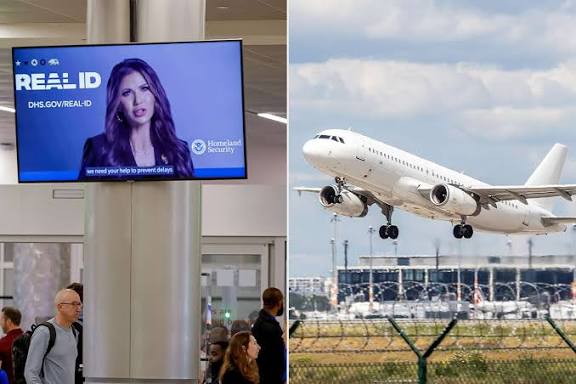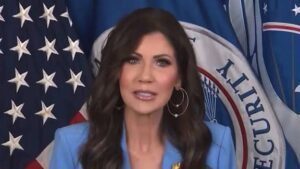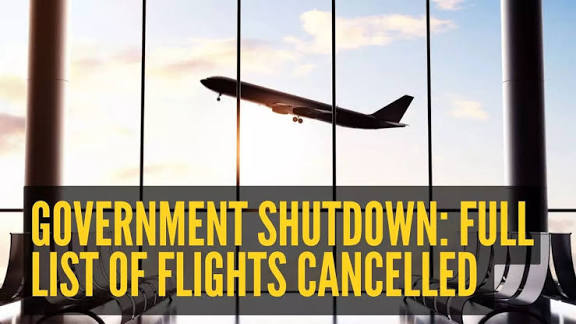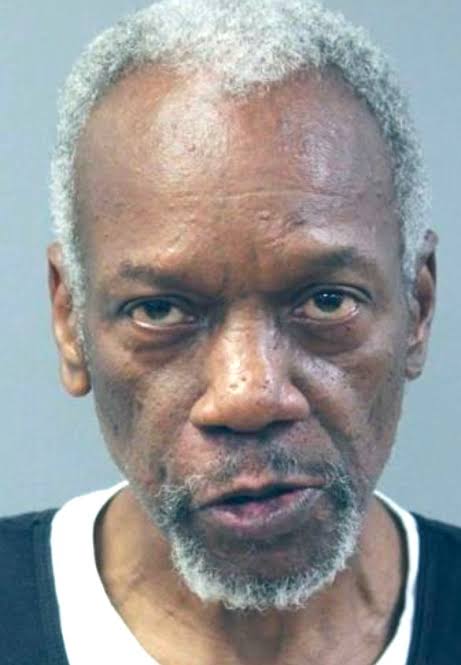Which airports are showing noem video: husband,before and after pictures,TSA,SNL

Following a government shutdown in October 2025, the U.S. Many major airports in. Today we will discuss about Which airports are showing noem video: husband,before and after pictures,TSA,SNL
Which airports are showing noem video: husband,before and after pictures,TSA,SNL
In October 2025, a short video featuring Homeland Security Secretary Kristi Noem sparked a national conversation after it was circulated for display in U.S. airports. The 21-second clip, released through the Transportation Security Administration (TSA), addressed disruptions caused by the ongoing federal government shutdown. While intended as an informational message, its political overtones quickly ignited controversy. Several major airports across the country refused to show the video, citing policies against partisan content in public spaces and concerns about legal compliance.
The discussion surrounding the video reflects deeper tensions in U.S. politics, media, and public institutions, raising questions about the boundaries of government communication, the role of public spaces, and how politics intersects with everyday experiences such as air travel.
The Content of the Video

In the video, Secretary Noem emphasized TSA’s commitment to ensuring travelers’ safety and efficiency at airport checkpoints. She highlighted that staffing shortages, caused by the federal government shutdown, might impact airport operations. However, the video directly attributed the disruption to the refusal of Democratic lawmakers to approve funding.
By framing the issue as a consequence of partisan politics, the video moved beyond a neutral announcement and became a flashpoint for political debate. The explicit mention of a political party created friction, especially given that TSA, as a federal agency, is bound by regulations that prevent federal employees from engaging in partisan activities while performing official duties.
Airports That Declined to Show the Video
Several airports across the United States refused to air the video. Their decisions were informed by policies promoting political neutrality, the Hatch Act, and general concerns about maintaining public trust.
1. New York City Area Airports
JFK, LaGuardia, and Newark Liberty airports, operated by the Port Authority of New York and New Jersey, decided against showing the video. The authorities emphasized that public spaces within airports are not appropriate venues for politically charged messages. Airport officials also cited the importance of adhering to federal guidelines that restrict political content in federally funded facilities.
2. San Francisco Bay Area Airports
San Francisco International (SFO), San Jose Mineta International (SJC), and Oakland International (OAK) followed suit. Authorities in these airports highlighted both legal concerns and their commitment to neutrality. Federal regulations like the Hatch Act prohibit federal employees from engaging in partisan political activity while on duty. Displaying the video in public airports could be interpreted as a violation of these rules.
3. Other Major Airports
Airports in cities such as Seattle, Portland, Phoenix, Charlotte, and Las Vegas also rejected the video. Many of these airports reinforced that politically neutral communication is essential in spaces serving a diverse public, and that maintaining public trust outweighs the benefits of broadcasting politically sensitive content.
The decisions by these airports underscore a broader reluctance to allow political messaging in spaces that serve as public utilities and neutral zones, particularly during periods of heightened political tension.
Legal and Policy Considerations
The rejection of the Noem video is strongly tied to legal frameworks designed to maintain impartiality in government operations. Two primary considerations influenced airport authorities:
1. The Hatch Act
The Hatch Act of 1939 restricts the political activities of federal employees. Specifically, it prevents employees from using their official authority to influence elections or promote partisan viewpoints while performing their duties. Legal experts argue that airing a video blaming one political party for a government shutdown could be seen as a violation, especially if it uses federal resources like TSA monitors or airport display screens.
2. State and Local Regulations
In addition to federal restrictions, many state and local laws emphasize neutrality in public spaces. Airports operate under multiple layers of oversight, and authorities must comply with laws governing political advertising and messaging. In states like Oregon, Washington, and New York, public institutions are prohibited from endorsing or promoting political campaigns or positions, further justifying the refusal of the video.
These legal considerations are reinforced by internal airport policies, which typically prohibit content that could be interpreted as partisan, controversial, or misleading, ensuring that public communication remains impartial and safe for all travelers.
Public and Political Reactions
The Noem video ignited reactions from political leaders, media commentators, and the general public. Responses varied significantly along partisan lines:
Democratic Leaders
Many Democratic officials condemned the video as a political attack. They argued that it shifted blame for the government shutdown onto one party, framing the issue as a partisan problem rather than a complex legislative impasse. Critics described the video as an inappropriate use of government communication channels for political purposes.
Republican Leaders
Some Republican leaders defended the video, stating that it was intended to inform the public of real operational disruptions at airports due to the government shutdown. Supporters emphasized that travelers deserved clear information regarding TSA staffing shortages, especially during busy travel periods.
Governors and State Authorities
State officials, including New York Governor Kathy Hochul, criticized the video as overtly partisan. Hochul explicitly called it “nakedly partisan,” stressing that airports should remain politically neutral spaces where travelers are not subjected to government messaging favoring one party over another.
Public Opinion
The general public displayed mixed reactions. Some travelers felt it was informative, as it provided context for potential delays and staffing shortages. Others saw it as an unnecessary politicization of public services, highlighting the challenges of balancing transparency with political neutrality.
The Role of Media and Satire
The controversy quickly extended beyond political debate into the realm of entertainment and social commentary. On Saturday Night Live (SNL), Tina Fey portrayed Secretary Noem, parodying the video’s message and highlighting its political undertones. The sketch amplified public discussion, demonstrating how satire can influence perceptions of government communication.
Social media platforms also played a significant role. Clips and memes circulated rapidly, with some users critiquing the political content, while others defended the message as an important explanation of operational realities. The online discourse exemplifies how government communications are no longer confined to their original channels, as they can quickly become subjects of public scrutiny, debate, and entertainment.
Implications for Government Communication
The Noem video episode underscores several important lessons about government communication in a politically polarized environment:
-
Neutrality is Essential
Public institutions must maintain neutrality, especially when communicating through government channels. Even well-intentioned messages can be perceived as partisan if they attribute blame or credit to political actors. -
Legal Compliance is Non-Negotiable
Agencies must comply with the Hatch Act and other regulations governing political activity. Failure to do so can lead to legal challenges and reputational damage. -
Public Spaces Are Sensitive Zones
Airports and other public facilities are viewed as neutral spaces serving diverse populations. Content displayed in these spaces must be carefully curated to avoid alienating or offending segments of the public. -
Media Amplification
Messages released in a digital era are subject to rapid amplification through news outlets, social media, and entertainment platforms. Governments must anticipate public reactions and plan communications accordingly. -
Political Polarization
Even factual statements about operational issues can become politicized. Government agencies must carefully balance transparency with the risk of appearing partisan.
The Intersection of TSA Operations and Politics
The video also highlights the operational challenges faced by the TSA during the government shutdown. Staffing shortages have led to longer security lines and reduced operational efficiency at many airports. These disruptions impact millions of travelers, creating pressure for clear communication. However, the political framing of operational challenges can complicate messaging, particularly when federal agencies are constrained by rules governing political neutrality.
Some analysts argue that agencies like the TSA must develop communication strategies that inform the public without attributing blame to political actors. This could include neutral announcements about delays, staffing shortages, and procedural adjustments without engaging in partisan rhetoric.
Conclusion
The refusal of multiple U.S. airports to air Secretary Kristi Noem’s government shutdown video reflects the complex intersection of politics, law, and public communication. While the video was intended as an informational message, its political content generated widespread controversy and legal concerns. Airports across the country acted to preserve neutrality, uphold legal standards, and maintain public trust.
This episode serves as a reminder of the challenges government agencies face in a politically divided environment. Clear, neutral, and legally compliant communication is essential, especially in spaces frequented by millions of people daily. The Noem video controversy illustrates how even short messages can become flashpoints for national debate, highlighting the need for careful planning and sensitivity in government communications.
Ultimately, the incident demonstrates that in an era of intense political scrutiny, transparency and neutrality must go hand in hand, ensuring that public communication serves its primary purpose: informing the public without fueling partisanship.
How useful was this post?
Click on a star to rate it!
Average rating 0 / 5. Vote count: 0
No votes so far! Be the first to rate this post.
About the Author
usa5911.com
Administrator
Hi, I’m Gurdeep Singh, a professional content writer from India with over 3 years of experience in the field. I specialize in covering U.S. politics, delivering timely and engaging content tailored specifically for an American audience. Along with my dedicated team, we track and report on all the latest political trends, news, and in-depth analysis shaping the United States today. Our goal is to provide clear, factual, and compelling content that keeps readers informed and engaged with the ever-changing political landscape.




